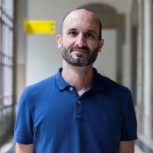Novel Advances in Stem Cell Therapy for Neurological Diseases
A special issue of Bioengineering (ISSN 2306-5354). This special issue belongs to the section "Regenerative Engineering".
Deadline for manuscript submissions: 30 April 2024 | Viewed by 9166
Special Issue Editors
Interests: stem cell therapy; neurodegenerative diseases; induced pluripotent stem cells; brain organoids; 3D bioprinting
Special Issue Information
Dear Colleagues,
The use of stem cells has opened a new perspective for the cure of neurological diseases, considered by many the ultimate challenge for regenerative medicine. The aim of stem cell therapy in the context of neurological disorders is to restore tissue function via reconstructing the lost neuronal circuits. However, to date, their therapeutic contribution is quite exclusively related to their “bystander effect” on remaining healthy tissue, rather than repairing the damaged network because of their limited cell survival, inadequate neuronal differentiation and poor integration in the host neuronal network. So, there is an urgent need to develop multidisciplinary strategies, merging stem cell biology, bioengineering and neuroscience with the common aim of achieving neurological function restoration. This Special Issue of Bioengineering on Novel advances in stem cell therapy for Neurological Diseases addresses the central role in defining the novel approaches developed to improve the efficacy of stem cell-based therapies for neurological disorders by bringing together contributions from worldwide experts on stem cell biology, engineering, biomaterials and stem cell therapy applied to neurological diseases.
Dr. Cecilia Laterza
Dr. Daniel Tornero
Guest Editors
Manuscript Submission Information
Manuscripts should be submitted online at www.mdpi.com by registering and logging in to this website. Once you are registered, click here to go to the submission form. Manuscripts can be submitted until the deadline. All submissions that pass pre-check are peer-reviewed. Accepted papers will be published continuously in the journal (as soon as accepted) and will be listed together on the special issue website. Research articles, review articles as well as short communications are invited. For planned papers, a title and short abstract (about 100 words) can be sent to the Editorial Office for announcement on this website.
Submitted manuscripts should not have been published previously, nor be under consideration for publication elsewhere (except conference proceedings papers). All manuscripts are thoroughly refereed through a single-blind peer-review process. A guide for authors and other relevant information for submission of manuscripts is available on the Instructions for Authors page. Bioengineering is an international peer-reviewed open access monthly journal published by MDPI.
Please visit the Instructions for Authors page before submitting a manuscript. The Article Processing Charge (APC) for publication in this open access journal is 2700 CHF (Swiss Francs). Submitted papers should be well formatted and use good English. Authors may use MDPI's English editing service prior to publication or during author revisions.
Keywords
- stem cell therapy
- neurological diseases
- regenerative medicine
- biomaterials
- 3D scaffold
- bioprinting
- hydrogel
- bioinks







